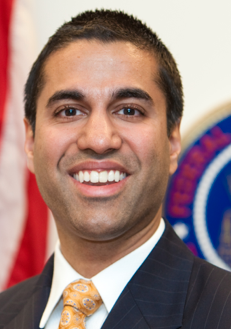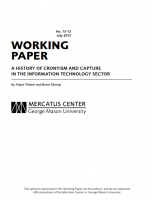Today I had the great pleasure of moderating a panel discussion at a conference on the “Virtual Economy” hosted by Thomson Reuters and the International Center for Missing and Exploited Children. On my panel were representatives from the Bitcoin Foundation, the Tor Project, and the DOJ, and we had a lively discussion about how these technologies can potentially be used by criminals and what these open source communities might be able to do to mitigate that risk.
The bottom line message that came out of the panel (and indeed every panel) is that the Tor and Bitcoin communities do not like to see the technologies they develop put to evil uses, and that they are more than willing to work with policymakers and law enforcement to the extent that they can. On the flip side, the message to regulators was that they need to be more open, inclusive, and transparent in their decision making if they expect cooperation from these communities.
I was therefore interested in the keynote remarks delivered by Jennifer Shasky Calvery, the Director of the Treasury Department’s Financial Crimes Enforcement Network. In particular, she addressed the fact that since there have been several enforcement actions against virtual currency exchangers and providers, the traditional banking sector has been wary of doing business with companies in the virtual currency space. She said:
I do want to address the issue of virtual currency administrators and exchangers maintaining access to the banking system in light of the recent action against Liberty Reserve. Again, keep in mind the combined actions by the Department of Justice and FinCEN took down a $6 billion money laundering operation, the biggest in U.S. history.
We can understand the concerns that these actions may create a broad-brush, reaction from banks. Banks need to assess their risk tolerance and the risks any particular client might pose. That’s their obligation and that’s what we expect them to do.
And this goes back to my earlier points about corporate responsibility and why it is in the best interest of virtual currency administrators and exchangers to comply with their regulatory responsibilities. Banks are more likely to associate themselves with registered, compliant, transparent businesses. And our guidance should help virtual currency administrators and providers become compliant, well-established businesses that banks will regard as desirable and profitable customers.
While it’s true that FinCEN’s March guidance provides clarity for many actors in the Bitcoin space, it is nevertheless very ambiguous about other actors. For example, is a Bitcoin miner who sells for dollars the bitcoins he mines subject to regulation? If I buy those bitcoins, hold them for a time as an investment, and then resell them for dollars, am I subject to regulation? In neither case are bitcoins acquired to purchase goods or services (the only use-case clearly not regulated according to the guidance). And even if one is clearly subject to the regulations, say as an exchanger, it takes millions of dollars and potentially years of work to comply with state licensing and other requirements. My concern is that banks will not do business with Bitcoin start-ups not because they pose any real criminal risk, but because there is too much regulatory uncertainty.
My sincere hope is that banks do not interpret Ms. Shasky Calvery’s comments as validation of their risk-aversion. Banks and other financial institutions should be careful about who they do business with, and they certainly should not do business with criminals, but it would be a shame if they felt they couldn’t do business with an innovative new kind of start-up simply because that start-up has not been (and may never be) adequately defined by a regulator. Unfortunately, I fear banks may take the comments to suggest just that, putting start-ups in limbo.
Entrepreneurs may want to comply with regulation in order to get banking services, and they may do everything they think they have to in order to comply, but the banks may nevertheless not want to take the risk given that the FinCEN guidance is so ambiguous. I asked Ms. Shasky Calvery if there was a way entrepreneurs could seek clarification on the guidance, and she said they could call FinCEN’s toll-free regulatory helpline at (800) 949–2732. That may not be very satisfying to some, but it’s a start. And I hope that any clarification that emerges from conversations with FinCEN are made public by the agency so that others can learn from it.
All in all, I think today we saw the first tentative steps toward a deeper conversation between Bitcoin entrepreneurs and users on the one hand, and regulators and law enforcement on the other. That’s a good thing. But I hope regulators understand that it’s not just the regulations they promulgate that have consequences for regulated entities, it’s also the uncertainty they can create through inaction.
Ms. Shasky Calvery also said:
Some in the press speculated that our guidance was an attempt to clamp down on virtual currency providers. I will not deny that there are some troublesome providers out there. But, that is balanced by a recognition of the innovation these virtual currencies provide, and the financial inclusion that they might offer society. A whole host of emerging technologies in the financial sector have proven their capacity to empower customers, encourage the development of innovative financial products, and expand access to financial services. And we want these advances to continue.
That is a welcome sentiment, but those advances can only continue if there are clear rules made in consultation with regulated parties and the general public. Hopefully FinCEN will revisit its guidance now that the conversation has begun, and as other regulators consider new rules, they will hopefully engage the Bitcoin community early in order to avoid ambiguity and uncertainty.




 The Technology Liberation Front is the tech policy blog dedicated to keeping politicians' hands off the 'net and everything else related to technology.
The Technology Liberation Front is the tech policy blog dedicated to keeping politicians' hands off the 'net and everything else related to technology.